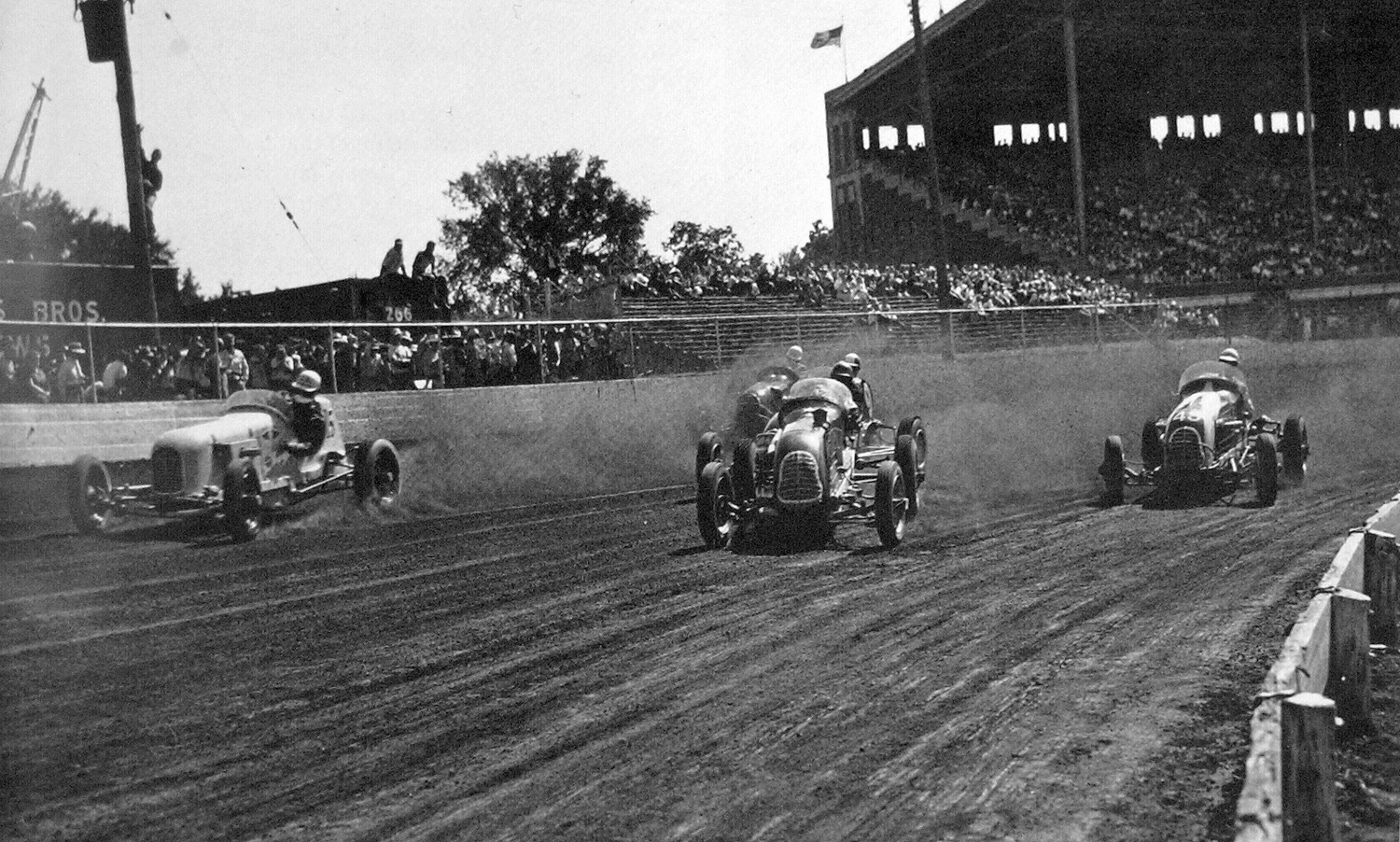
Drivers compete at the Iowa State Fairgrounds’ old racetrack. Photo courtesy of Bill Haglund
By Bill Haglund
When Iowa State Fair officials announced last September an end to racing for the foreseeable future at the Iowa State Fair Speedway, it marked the final lap for the venue’s longtime racetrack as fans and drivers have come to know it.
For more than 100 years — ever since the Iowa State Fairgrounds’ half-mile track and large Grandstand were built in 1907 — automobile racing had been a summertime mainstay at the facility. Granted, weekly racing at the Fairgrounds did not begin until the 1960s, but racing had been a State Fair staple beginning in those years leading up to World War I and since.
Iowans were proud of the new half-mile track and Grandstand when it was completed. They eagerly read of the exploits of legendary Barney Oldfield, the man who first tested the new facility 110 years ago. Oldfield and his race car made several laps, at speed, and proclaimed the track “one of the finest in the nation.”
From that humble, one-car beginning, the track and its history grew slowly. It wasn’t until the International Motor Contest Association (IMCA) was formed in 1915 that the sport of speed saw a rapid growth and the Fairgrounds was right in the center of that explosion. Speedway-type race cars, under the direction of IMCA, became a staple of entertainment each year at the State Fair. Crowds overflowed the massive Grandstand on those days when IMCA founder J. Alex Sloan brought his speed demons to the annual 10-day event.
Things didn’t change until after World War II. Automobile racing had been banned across the nation when the U.S. became involved in the war. The ban was finally lifted in August 1945, too late for racing to be added to that year’s State Fair. Beginning in 1946, however, the race cars were back and fans overflowed the Grandstand to watch, standing next to the fence in turn one, along the back stretch and completely filling the grassy area separating the Grandstand and the track, protected only by fences erected for that purpose.
TO READ MORE ABOUT THIS STORY AND OTHER FASCINATING STORIES ABOUT IOWA HISTORY, subscribe to Iowa History Journal. You can also purchase back issues at the store.
